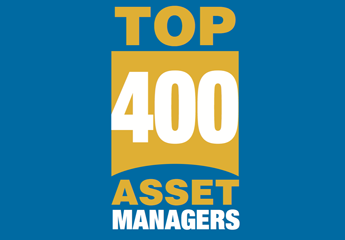The integration of DWS into the re-branded Deutsche Asset & Wealth Management (DeAWM) last year saw Germany’s largest asset manager increase its domestic assets under management by more than 50% to €931bn, according to IPE’s Top 400 Asset Managers survey.
For DeAWM, size in key.
Speaking at a recent press event in London, DeAWM head Michele Faissola said that, as an asset manager in a market where margin pressure would continue and fragmented regulation remain a major challenge, “you need to be efficient and have the scale” .
He predicted the “big ones will get bigger” over the long term and that those in the middle “will get crushed”.
However, he also foresaw a “dichotomy”, in which “really specialised but small boutiques” with a product or a regional focus could survive.
“There will be a combination of some Darwinian process, after which the winner takes all, and M&A activity in the industry,” Faissola said.
For DeAWM, he stressed that “no further parts of the business will be put on sale” for the foreseeable future.
The asset manager had aborted sales talks over its real estate branch RREEF in 2013 and is now in talks with BNY Mellon to outsource the administrative side of its real estate fund business, including reporting or book keeping.
But Faissola also said that, while he was “not opposed” to further acquisitions, it “might be a little bit too early to consider that”.
He added: “Once we have completed all our integrations, I am not against it, but it needs to be targeted, additive and provide added value.”
Barbara Rupf-Bee, the newly appointed head of EMEA for the asset manager, also identified regulation as one of the drivers for consolidation in the market.
Speaking on a panel during the event, she pointed out the importance of dialogue and engagement with the regulators, which “leads into certain costs”.
“Regulators are now starting to become more savvy in seeing what works and what doesn’t, and we will see more focus on the suitability of regulation,” she said.
She also said she was convinced the trend of institutions “weaving” hedge funds and other alternative strategies into their portfolios would not be hindered by regulation.
“Particularly, insurers and pension funds are forerunners of this,” she said.
Rupf-Bee pointed out that, “historically, alternatives have been sitting on the far right side of the portfolios, and nobody knew quite how to integrate them”.
She added that any existing regulation hindering such asset class cross-overs could be “worked around”.
In countries such as Germany, she said, the fact the full range of alternatives was not available to pension funds must be taken into account.
“But,” she added, “as we go into new trends, the regulation will follow – it will almost never lead.”


















No comments yet